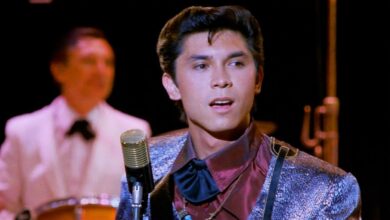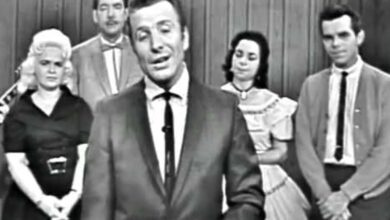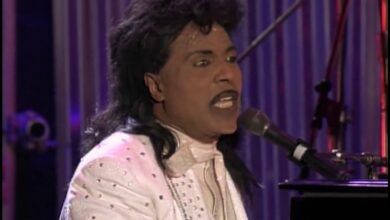All I Have to Do Is Dream: The Everly Brothers’ Timeless Classic That Continues to Captivate Generations
In 1958, the Everly Brothers released “All I Have to Do Is Dream,” a song that would become one of their most enduring hits. Written by the prolific songwriting duo Felice and Boudleaux Bryant, the track showcased the brothers’ signature harmonies and solidified their place in the burgeoning rock and roll scene. The song’s dreamy melody and heartfelt lyrics resonated with audiences, leading it to top charts across multiple genres.
The recording session for “All I Have to Do Is Dream” took place on March 6, 1958, at RCA Studios in Nashville. Remarkably, the song was captured in just two takes, a testament to the Everly Brothers’ professionalism and the seamless synergy between them and the session musicians. Chet Atkins, a renowned guitarist and producer, played electric guitar on the track, adding a distinctive touch to its sound.
Upon its release in April 1958, the song achieved unprecedented success. It became the only single ever to simultaneously top all of Billboard’s singles charts, including the pop, R&B, and country charts. On May 12, 1958, it reached number one on the “Best Sellers in Stores” chart, and by May 19, it had also ascended to the top of the “Most Played by Jockeys” and “Top 100” charts. Its crossover appeal was a testament to its universal message and the Everly Brothers’ broad fan base.
Internationally, “All I Have to Do Is Dream” found similar success. In the United Kingdom, it topped the New Musical Express chart in June 1958 and remained there for seven weeks, underscoring the duo’s global appeal. The song’s popularity was not confined to English-speaking countries; its emotive melody and harmonies transcended language barriers, making it a worldwide hit.
The song’s B-side, “Claudette,” was notable in its own right. Written by Roy Orbison and named after his first wife, it became Orbison’s first major songwriting success. The success of “Claudette” encouraged Orbison to pursue a solo career, leading to his own series of hits in the years that followed.
The enduring appeal of “All I Have to Do Is Dream” can be attributed to its relatable lyrics and the Everly Brothers’ harmonious delivery. The song speaks to the universal experience of longing and the solace found in dreams, themes that continue to resonate with listeners decades after its initial release.
Over the years, the song has been covered by numerous artists across various genres, each bringing their unique interpretation to the classic. Notable renditions include those by Richard Chamberlain, Glen Campbell and Bobbie Gentry, and Andy Gibb and Victoria Principal. These covers have introduced the song to new audiences, ensuring its place in the annals of music history.
The song’s influence extends beyond the music charts. It has been featured in numerous films, television shows, and commercials, often used to evoke a sense of nostalgia or to underscore themes of love and longing. Its timeless quality makes it a favorite choice for storytellers seeking to connect with audiences on an emotional level.
In recognition of its enduring impact, “All I Have to Do Is Dream” was inducted into the Grammy Hall of Fame in 2004. This honor reflects its significance in the cultural and musical landscape, as well as its influence on subsequent generations of musicians.
The song also holds a special place in the Rock and Roll Hall of Fame, being named one of the “500 Songs that Shaped Rock and Roll.” This acknowledgment highlights its role in the development of the genre and its lasting legacy in the world of music.
The Everly Brothers’ rendition of “All I Have to Do Is Dream” is often cited as a quintessential example of their harmonious style. Their seamless vocal blend, combined with the song’s melodic structure, has influenced countless artists and remains a benchmark for vocal duos.
The song’s success also had a significant impact on the Everly Brothers’ career, solidifying their status as leading artists of their time. It opened doors to international tours, television appearances, and further recording opportunities, establishing a legacy that continues to be celebrated today.
Reflecting on the song’s creation, it’s noteworthy that Felice and Boudleaux Bryant wrote it in a relatively short period. Their ability to craft a song that resonated so deeply with audiences speaks to their songwriting prowess and understanding of universal themes.
The recording session itself was marked by efficiency and a clear artistic vision. The decision to keep the arrangement simple, focusing on the harmonies and the emotive power of the lyrics, contributed to the song’s timeless appeal.
In the decades since its release, “All I Have to Do Is Dream” has remained a staple on oldies radio stations and continues to be discovered by new generations of listeners. Its enduring popularity is a testament to its universal themes and the Everly Brothers’ captivating performance.
Today, “All I Have to Do Is Dream” stands as a timeless classic, a song that captures the essence of youthful longing and the power of dreams. Its legacy endures, reminding us of the enduring power of music to touch the human soul.



